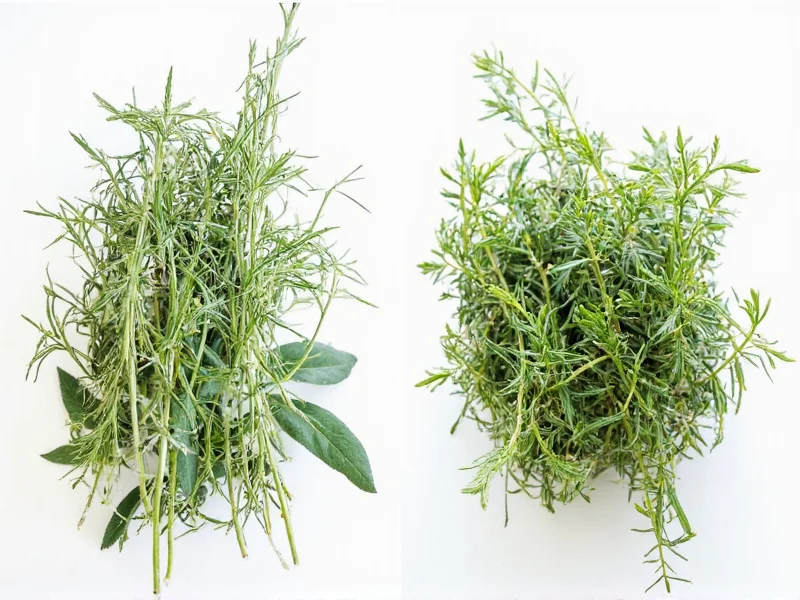Understanding herb conversions is essential for achieving balanced flavors in your cooking. When substituting dried sage for fresh (or vice versa), getting the measurements right prevents your dishes from becoming overpowering or bland. Sage, with its distinctive earthy, slightly peppery flavor, requires particular attention due to its potency.
Why Fresh and Dried Sage Have Different Potencies
Herbs lose approximately 70-85% of their weight during the drying process as water content evaporates. This concentration effect means dried herbs deliver more intense flavor in smaller quantities. Fresh sage contains moisture that dilutes its essential oils, while dried sage has these compounds concentrated. The cellular structure breakdown during drying also makes flavor compounds more readily available.
Understanding the 3:1 Conversion Ratio
The 3:1 ratio (fresh to dried) serves as a reliable starting point, but several factors can influence the precise conversion needed:
| Measurement | Fresh Sage | Dried Sage |
|---|---|---|
| Teaspoon | 3 tsp | 1 tsp |
| Tablespoon | 3 tbsp | 1 tbsp |
| Cup | 3 cups | 1 cup |
Factors Affecting Sage Conversion Accuracy
Several variables influence how precisely you should apply the standard conversion ratio:
- Drying method: Oven-dried sage retains more volatile oils than sun-dried, affecting potency
- Storage duration: Dried sage loses approximately 15-20% of its potency each year when stored properly
- Grind size: Finely ground dried sage delivers more immediate flavor than coarsely crushed
- Recipe cooking time: Long-simmered dishes require slightly less dried sage than quick-cooking recipes
- Sage variety: Common garden sage (Salvia officinalis) follows this ratio, while other varieties may differ
Practical Cooking Applications
When substituting in recipes, consider these practical guidelines:
For dishes with short cooking times like compound butters or quick sautés, use the full 3:1 ratio. The fresh sage won't have time to mellow, so precise conversion matters most. In long-cooked dishes like braises or soups, you can often use slightly less dried sage (try a 2.5:1 ratio) since prolonged heat extracts more flavor from dried herbs.
When making Thanksgiving stuffing—a classic sage application—remember that dried sage benefits from being added early to rehydrate and distribute flavor, while fresh sage works best added in the last 15-20 minutes of cooking to preserve its brighter notes.
Storage Recommendations for Maximum Potency
To maintain consistent conversion accuracy, proper storage is crucial:
- Store dried sage in airtight containers away from light and heat
- Label containers with harvest or purchase date (optimal use within 1-2 years)
- Keep fresh sage wrapped in slightly damp paper towels in the refrigerator crisper
- Freeze fresh sage leaves in olive oil for longer storage with minimal flavor loss
- Never store dried herbs above the stove or near other heat sources
Avoiding Common Sage Conversion Mistakes
Cooks frequently make these errors when converting between fresh and dried sage:
- Using equal measurements (1:1 ratio) resulting in overpowering dishes
- Not adjusting for storage duration of dried herbs
- Adding dried sage too late in the cooking process
- Using crushed dried sage interchangeably with whole dried leaves
- Not considering the dish's liquid content (more liquid requires slightly more herb)
When in doubt during cooking, start with less dried sage than the conversion suggests, then taste and adjust. Remember that you can always add more, but you cannot remove excess sage once incorporated. For critical recipes, consider making a small test batch with your converted measurements before preparing the entire dish.
Special Considerations for Different Cuisine Types
Various culinary traditions use sage differently, affecting conversion needs:
Italian cuisine often features fresh sage in brown butter sauces for pasta, where the 3:1 ratio applies strictly. In contrast, British recipes for sage and onion stuffing traditionally use dried sage, requiring careful conversion when adapting to fresh. German cuisine frequently uses fresh sage in cheese dishes, while Middle Eastern preparations often call for dried sage in spice blends like za'atar variations.
Understanding these cultural contexts helps determine whether a recipe's origin suggests fresh or dried herb usage, guiding your conversion approach for authentic results.
Final Conversion Tips
Mastering fresh to dry sage conversion transforms your cooking results. Remember that the 3:1 ratio serves as your foundation, but always consider your specific ingredients, cooking method, and personal taste preferences. When adapting family recipes or experimenting with new dishes, keep notes on your conversions and adjustments—this builds your personal reference for future cooking. The difference between a perfectly seasoned dish and an unbalanced one often comes down to these precise herb measurements, making accurate conversion knowledge a valuable culinary skill.











 浙公网安备
33010002000092号
浙公网安备
33010002000092号 浙B2-20120091-4
浙B2-20120091-4